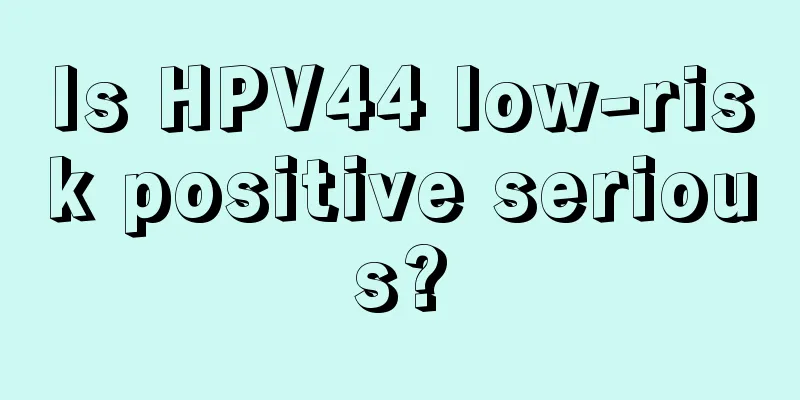Is HPV44 low-risk positive serious?

|
In fact, most reproductive tract infections are caused by viral infections. After infecting our human body, it still takes some time to grow. This period of time is the dangerous period of reproductive tract infection. HPV44 is one of the most common genital infections that affects people's lives in today's society. Because HPV44 is highly contagious, many people are unaware of the time they are infected with HPV44. Because they don't know how long the dangerous period of HPV44 is, they miss the best time to treat genital infections. Next, let’s discuss how long the dangerous period of low-risk HPV44 negative is. HPV44 low-risk negative is divided into primary and recurrent, which often have a dangerous period. Next, we will introduce the dangerous period of HPV44 low-risk negative: The risk period for primary HPV44 low-risk negative is approximately 2-10 days, with an average of 6 days. The symptoms of primary infection are usually serious. There is often burning, itching or abnormal sensation at the vaccination site before the blisters appear. Women have more vaginal discharge, and dark red spots or papules appear locally. On this basis, blisters the size of white sesame seeds to mung beans quickly appear. The blister fluid is clear at first, but can gradually become turbid or even purulent. The blister wall is thin and easy to rupture, producing large pus spots, active pain, and more obvious after stimulation. The risk period for recurrent low-risk HPV44 negative tests is approximately 1-3 months. Those infected by HPV-2 have a higher recurrence rate and a higher frequency of disease onset. About 60% of patients will have an attack within 1 year after the first infection, with the frequency of attacks being 4-6 times in the first year, and some having more than 10 times. The symptoms of recurrent HPV44 low-risk negative are milder than those of primary HPV44 low-risk negative. The risk factors for cervical cancer in women are 5-10 times greater than those in the general population. How long is the dangerous period of hpv44 low-risk negative? The above is a detailed introduction to how long is the dangerous period of hpv44 low-risk negative. I hope that everyone can have a better understanding of hpv44 low-risk negative. HPV44 low-risk negative is not a general reproductive tract infection, nor does it mean that the problem can be solved by taking some medicine casually after getting sick. It is necessary to see a doctor for treatment immediately after getting sick. Finally, I would like to remind everyone that improving your bad habits can effectively prevent the infection of reproductive tract infections. |
<<: What are the dangers of pregnant women smelling cigarettes?
>>: Why can't pregnant women use iodine?
Recommend
What should you bring for an autumn barbecue? What should you barbecue to nourish your kidneys?
Since roasting meat produces smoke, most barbecue...
Female early sharp wet pictures
Many people may not know about the early symptoms...
Main functions of Kangfute suppository
Kangfute suppository is mainly used to treat some...
It's trending again, please don't ignore it! A family of 5, 4 of them were found to be infected with Helicobacter pylori, the youngest was only 6 years old
Today, a topic about Helicobacter pylori once aga...
Why is the leucorrhea so thin?
Women not only experience menstruation every mont...
When does crabapple ripen? Benefits of eating crabapple for women
Crabapple, also known as winter red fruit. Studie...
Why does my stomach hurt during menstruation?
Many women experience abdominal pain, soreness, a...
Breastfeeding breast pain
After giving birth, women usually go through a pe...
Can I eat red bean paste during menstruation?
Diet is very important for us humans, especially ...
Medicine Baby Quiz | Antihypertensive drugs do not have to be taken in the morning?
Medicine Baby Analysis Hypertension is divided in...
What causes leucorrhea and abdominal distension and pain?
Excessive leucorrhea and lower abdominal distensi...
Scarf knitting pattern
There are many ways to knit a scarf. Many friends...
What's wrong with a pimple under the pubic hair?
In life, gynecological diseases often plague our ...
Can women eat placenta during menstruation?
Menstruation is a process that every female frien...
Causes of bleeding and abdominal pain during pregnancy
Pregnant mothers should be alert to some adverse ...









